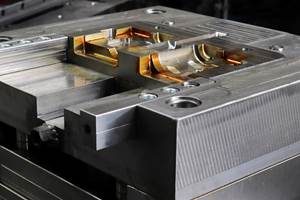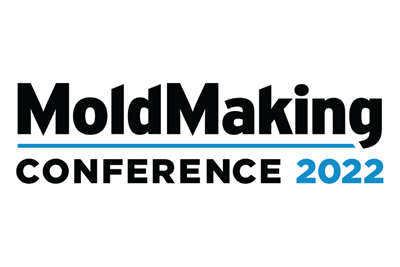Mold Maintenance
Goal: To develop awareness and planning for more proactive mold maintenance by molders and their mold builders. Repairs and downtime are costly for molders, jeopardize OEM's program launches, and can be a liability for mold builders' customer relations. This block will review some essential processes to mold maintenance/repair.
Who Should Attend: Toolroom managers at molding facilities, molding facility owners and toolroom managers, OEM contacts responsible for tooling productivity and costs, and personnel at mold-building companies responsible for repairing and maintaining their customers' tools.
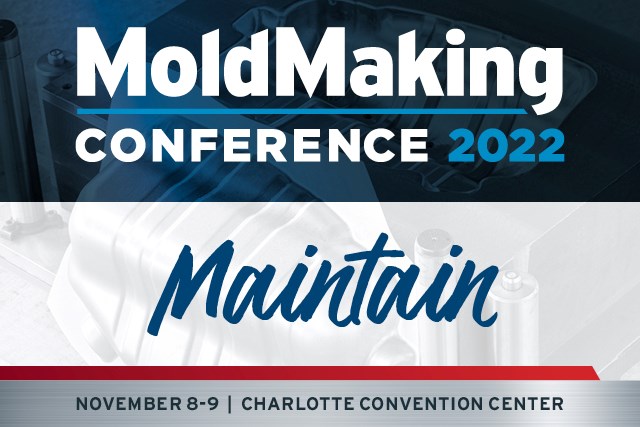
Sessions
Designing Molds for Maintenance Wayne Daniel, Director, Business Development, Canon Virginia
Design for maintenance, at its core, is simply considering the structure and elements of the tool and designing them to be maintenance-friendly. For many years, Wayne Daniel was responsible for a large injection molding operation that included nearly 100 active molds. He became familiar with the mold maintenance department and witnessed the differences between molds that were easy to maintain and those that were not. After those experiences, he has become adamant that ease of maintenance is important to extend tool life and must be considered during the design phase.
The question everyone asks is, “How can you quantify the value and the importance of maintenance?” The quick answer is this: With basic preventive maintenance (PM) systems Canon Virginia has eliminated its internal tool replacement program. Back in the day, like many molders, they budgeted year after year for the replacement of tools after one million cycles. Through innovation and the improvement in design for maintenance processes — as well as the advancement of technology — they extended tool life to two million shots, then three million shots and beyond. Now, they expect that their tooling will last until the end of the product’s life. Come to this session to learn 5 tips for designing your molds for maintenance.
A Digital Revolution: Managing Data from Mold Design to Mold Repair, SyBridge Technologies Bryan Belanger, Chief Digital Officer
SyBridge is in the midst of a revolution. The company is leveraging technology in all facets of their business to deliver greater value to customers. Historically, the intersection of IT and moldmaking has been sporadic and fraught with integration challenges. SyBridge is out to change that narrative by leveraging a technology-first methodology focused on customer satisfaction, operational excellence and data insights. Their suite of digital solutions to efficiently manage products throughout their lifecycles, from program management, design, manufacturing, quality, testing to service and repair is helping customers achieve industry-leading turnaround time, improve quality, throughput and uptime. Come learn about some of the ways technology is helping SyBridge change the game, including the SyBridge Digital Platform that provides a centralized solution for customers to access data, receive production updates, quote new projects, track their products, and more; unified business intelligence that leverages the power of data to manage the business end to end; global data management that works in a distributed world; and, operational excellence that is the integration and evolution of a cohesive suite of business tools.
Remote Mold Cleaning, Monitoring and Diagnostics, Steve Wilson, Cold Jet
Come discover the possibilities of remote mold monitoring, service, programmable cleaning recipes and full Automation. This session will take the audience through the Industry 4.0 capabilities applied to dry ice technologies that provide users with a clear view of the data needed to make decisions that will accelerate a return on investment and profitability through increased machine efficiency and uptime. This technology enables tracking and support of your installed fleet of dry ice mold cleaning equipment and helps you understand, control, delegate and orchestrate your daily business without a need to be physically present.
Laser Technology on Mold Textures Ensures Brand Protection, Recycling and Traceability, Chad Hase, Director of Advanced Manufacturing, Custom Etch
Come learn about a new innovative laser technology that places digital codes within textures that are hidden to the naked eye. This embedded digital watermark technology into textures creates an imperceptible code, the size of a postage stamp, covering the surface of just about anything in the molding industry. Every code is unique and is a string of numbers that points to a database able to carry a wide range of attributes for a variety of uses. The code is not visible to the human eye but fully readable by machine vision systems including smart phones.
This session will share real-world applications in moldmaking industry, including brand protection, recycling and traceability/Industry 4.0 digitalization. For example, a digital watermark works across molding technologies and can identify manufacturer, resin type, color, weight, use, recyclable vs. non-recyclable, monolayer vs. multi-layer packaging, carbon-black, opaque, difficult-to-recycle packages, and new material introductions (PCR vs. virgin). This product digitization solution features digital watermarks and other unique identifiers combined with product intelligence in the cloud and activates products, objects and digital media for greater accuracy, efficiency, security and recyclability. Companies benefit from deeper business insights, better brand integrity and supply chain traceability for total transparency.
A Multi-Faceted Approach to Sustainability in Moldmaking: Mold Steel, Mold Building and Molding, Kelly Santini, Safety & Sustainability Leader, iMFLUX; Patricia Miller, Director of Technical Sales, Uddeholm North America
Suppliers to the molding industry and the molding process must be developed for long-term viability. It’s time to look for sustainable development opportunities - in steel making, mold building and molding – to reduce carbon emissions. This presentation will explore the approaches being developed at a tool steel producer for fossil-free production and reduced fossil footprint of the mold steel in distribution by 2030. Come to learn how one tool steel provider conducted studies to identify indirect greenhouse gas emissions in the upstream supply chain of its purchased materials, direct emissions from its processes and the production of tool steels, and downstream on the treatment of waste and wastewater. Learn what activities they focused on first to have the most significant effect, and in what direction they are working to develop more sustainable tool steels that meet customer demands. The session will continue with iMFLUX looking at sustainable mold manufacturing – how the supply chain is evaluated and how the mold build process continues to be sustainable. Learn about recycling initiatives, zero waste to landfill, employee engagement and more during the mold build process. Finally, the presenters will explore how injection molding technologies can further ensure a lower carbon footprint for the life of the mold.
Visit moldmakingconference.com to register today!
If you register before the Early Bird Deadline of October 7th, you will save $200 on the registration cost. Register today and SAVE BIG!
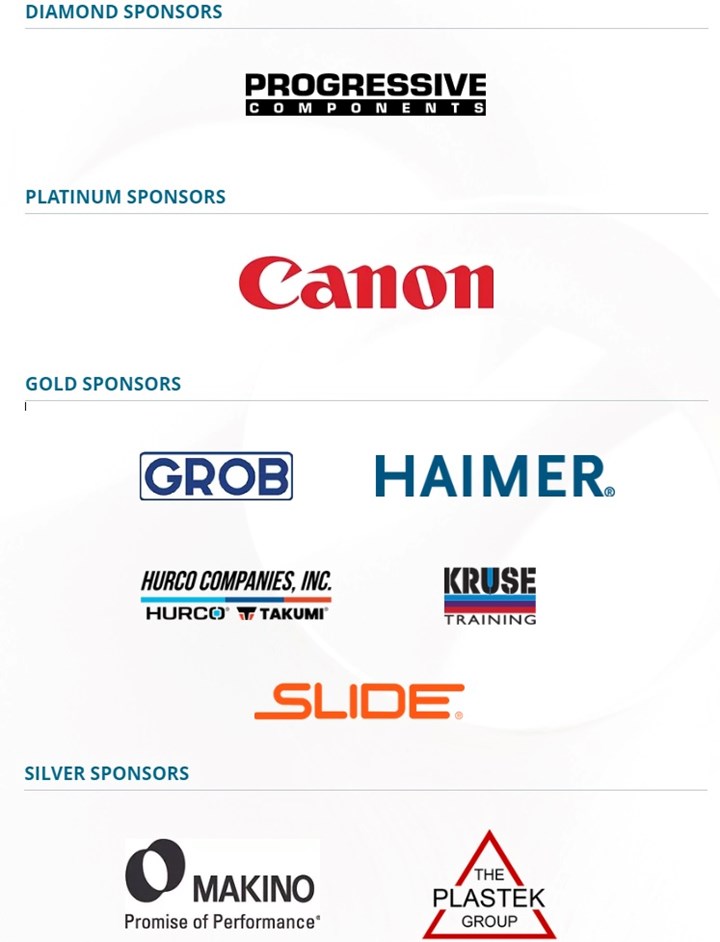
Related Content
How to Use Diffusion Bonding to Optimize a Mold’s Thermal Performance
Joining dissimilar metals has tremendous potential for conformal cooling, but to successfully use diffusion bonding, a mold builder must understand the complexities of the interface and its effect on the chemical and thermo-mechanical properties of the bond.
Read MoreSurface Finish: Understanding Mold Surface Lingo
The correlation between the units of measure used to define mold surfaces is a commonly raised question. This article will lay these units of measure side by side in a conversion format so that companies can confidently understand with what they are dealing.
Read MoreThe In's and Out's of Ballbar Calibration
This machine tool diagnostic device allows the detection of errors noticeable only while machine tools are in motion.
Read MoreHow to Use Thermal Management to Improve Mold Cooling
A review of common mold cooling issues and possible solutions, including 3D printing applications.
Read MoreRead Next
Introducing The MoldMaking Conference—Engineer, Build, Maintain, Manage
It's time to bring the MMT brand to life with in-person moldmaking-specific educational content at the MoldMaking Conference November 8-9 in Charlotte, North Carolina.
Read MoreMoldMaking Technology Announces the MoldMaking Conference
The MoldMaking Conference will take place from November 8-9, 2022 at the Charlotte Convention Center in Charlotte, North Carolina. The event will be co-located with the Molding Conference.
Read MoreMoldMaking Conference: All About Next-Level Mold Manufacturing
Next-level mold manufacturing is dependent upon accurate, repeatable and efficient technologies, processes and talent when it comes to designing, building, maintaining, repairing and managing molds. It is with this focus in mind that we are launching The MoldMaking Conference on November 8-9 in Charlotte, NC.
Read More



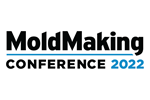








.png;maxWidth=300;quality=90)




.jpg;maxWidth=300;quality=90)



_300x250 4.png;maxWidth=300;quality=90)

